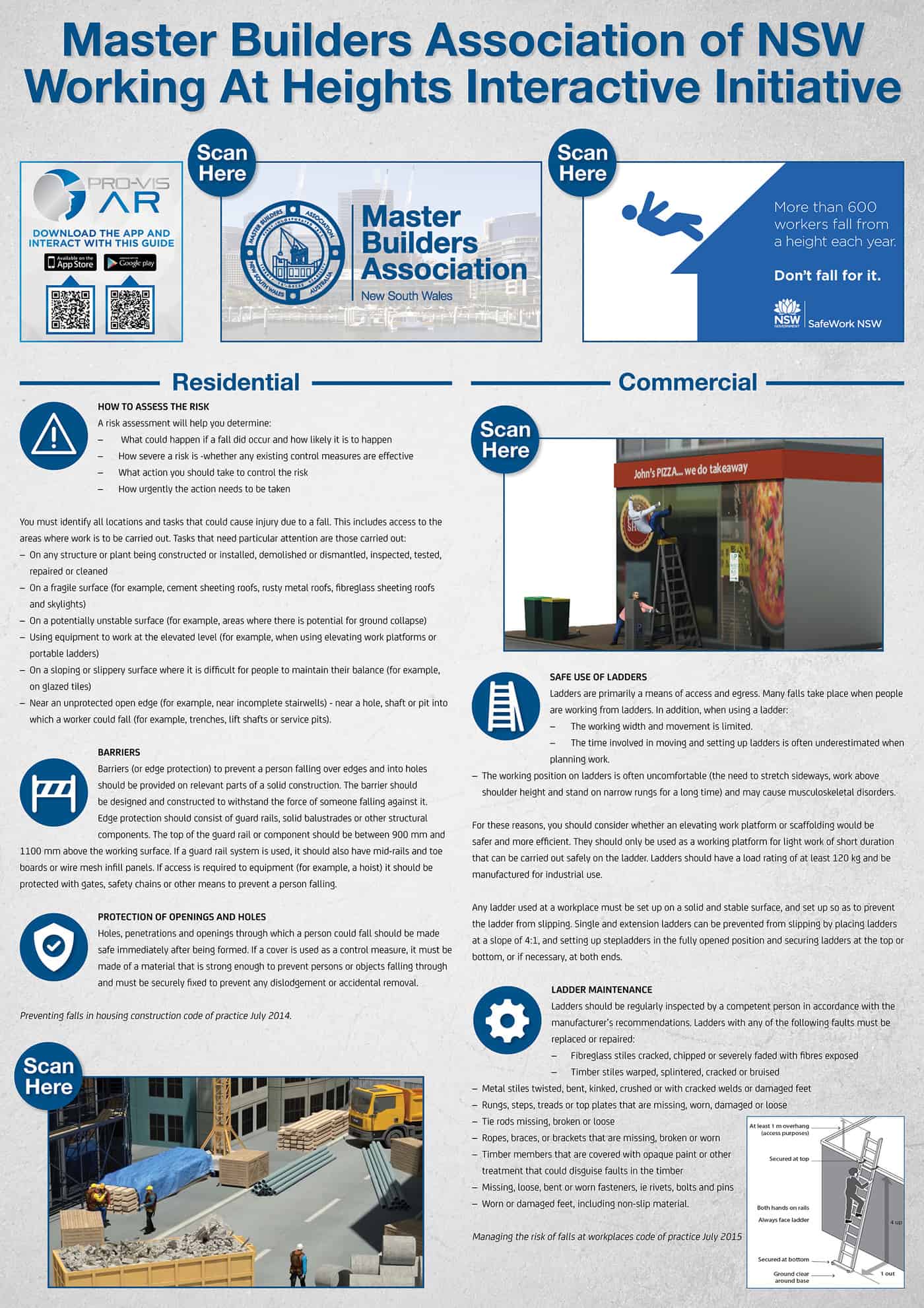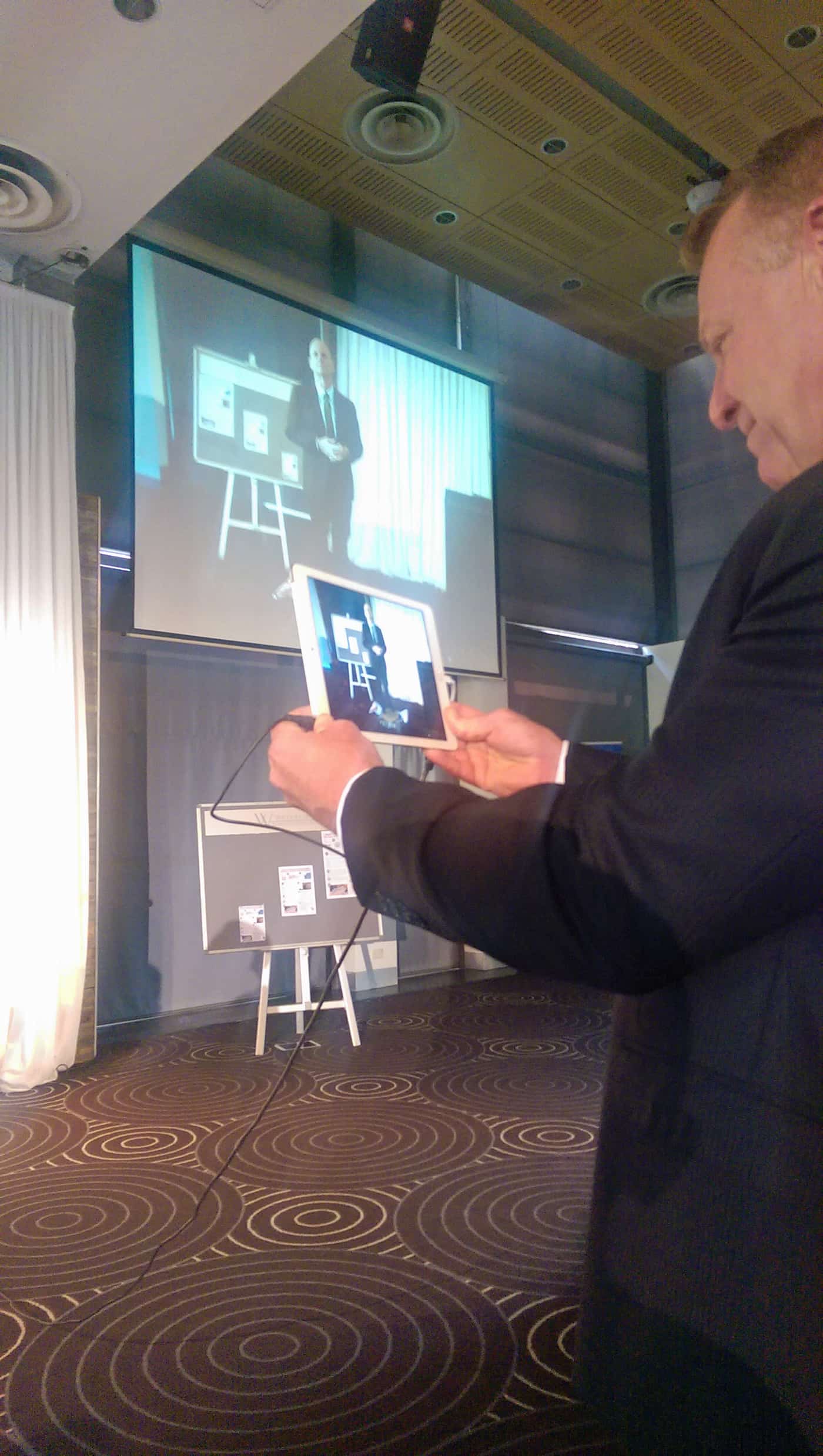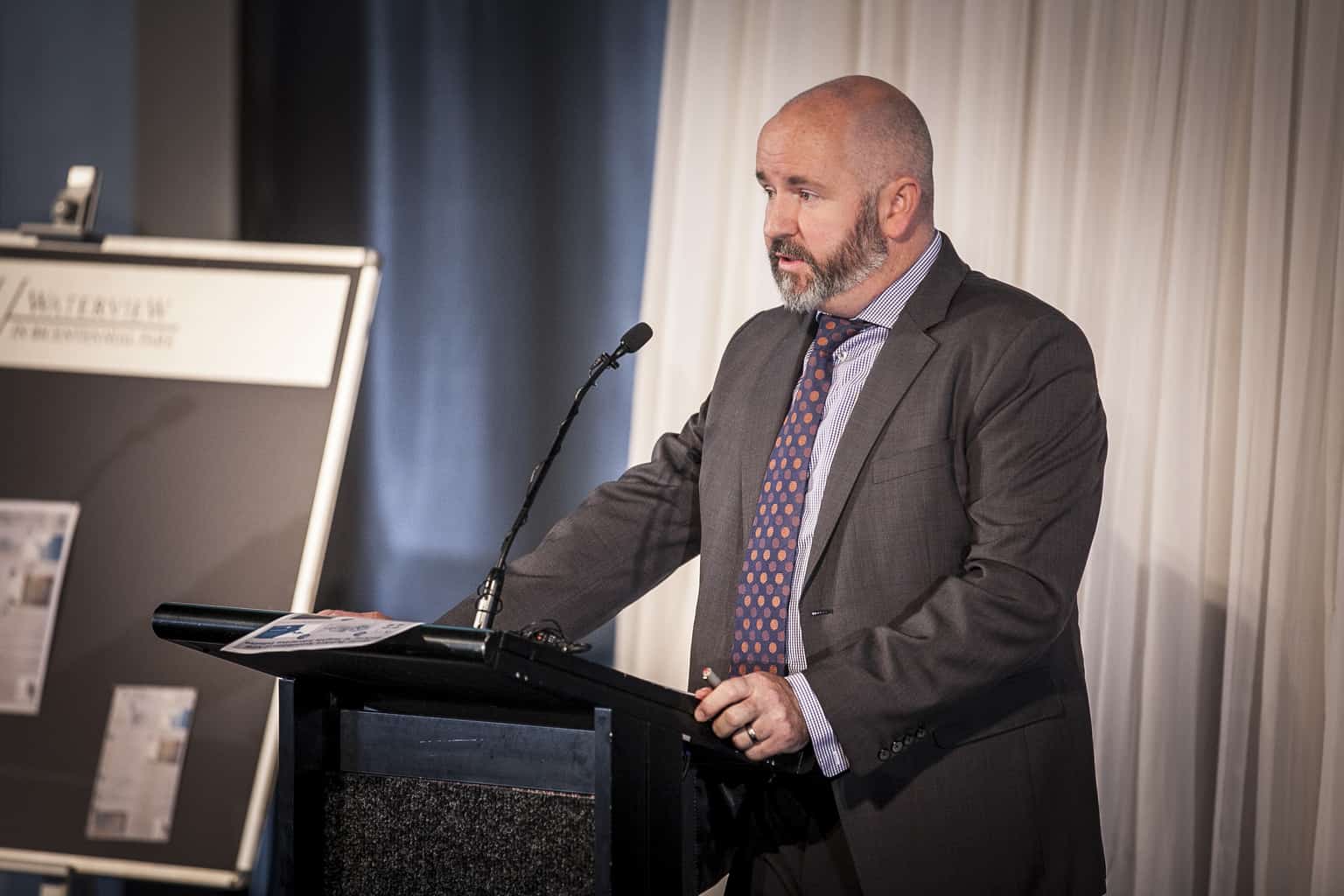 On February 2016, the New South Wales division of the Master Builders of Australia (MBANSW) launched a new mobile app that applies augmented reality (AR) to access safety information related to construction sites. The software has the capacity to access safety information in the form of videos, text, documents and internet links that can put occupational health and safety (OHS) information into the hands of workers.
On February 2016, the New South Wales division of the Master Builders of Australia (MBANSW) launched a new mobile app that applies augmented reality (AR) to access safety information related to construction sites. The software has the capacity to access safety information in the form of videos, text, documents and internet links that can put occupational health and safety (OHS) information into the hands of workers.
There is great potential in this software application and the MBANSW should be acknowledged for supporting a technology that is still in its early development but offers an additional way of accessing important occupational health and safety information at the place where may be most needed – in the hands of workers.
But the app is not the answer to everything and, thankfully, MBANSW never claimed it was. There are technical and organisational limitations to the app but it is a very good start.
The app is called Pro-Vis AR and is available for Apple and Android products. It has evolved from the Provisual safety information posters that many Australian workplaces have.

The augmented reality option allows a static poster, image or website, to be interactive by recognising markers that are included in the poster. For instance, a marker may be included in a working at heights poster or a website – the scenario presented at the launch. The app recognizes the marker and manifests the content. That content could include a video of how to work safely and prevent falls from height. It may link through to the most relevant Code of Practice or a safety alert, a safety checklist or other safe working information. The AR is a key to safety information that brings that information to your smart phone or iPad.
The limitations of the app are common to many safety apps. Some, like Pro-Vis AR, are configured for the 4G network. Anyone using the app through wi-fi or 3G will have very slow access to the content which will test the patience of a construction worker on site who needs to verify a Safe Work Method Statement or work practice.
Many construction workers have smart phones but might prefer a simpler phone that, at best, offers reliable phone and text message access. Modern smartphones are also notoriously fragile.
Advocates of these type of apps like to profess that a high percentage of young workers or Australians have smartphones and therefore they are open to accessing safety information. Having a smart phone is different from using it for accessing safety information.

Like most apps Pro-Vis AR is limited by the content it accesses. Existing OHS content is mostly available through the Internet with a bit of searching. Pro-Vis AR accesses the same information but in a different way and allows for the information to be repackaged and personalised to meet the needs of specific workplaces, industry sectors or workforces. This is a very attractive option but it has to compete against all the other distractions accessible through the phones such as compilations of Safety Fails.
Where the Pro-Vis AR app is most likely to succeed is:
- with safety alerts or other time-critical information being pushed out to those workers with the app;
- making a weekly toolbox talk available throughout the worksite or project by video-ing the toolbox and uploading it to the app’s servers. (Multiple toolboxes could be archived to create a safety library specific to a particular project or work activity);
- ensuring that the same safety information is available at the same time to multiple worksites (and remote locations if 4G is available);
- encouraging the provision of safety information to be truly multi-media, and or multilingual.
On that last point, imagine if a safety alert format was not limited to a single A4 piece of paper which is (assumed to be) posted on a safety noticeboard and people view, maybe, once. Pro-Vis AR allows for the safety alert to include an audio description and, perhaps a video, of the focus of the safety alert be it a crane collapse, failed lifting lugs, poor quality or non-compliant personal protective equipment, or other issue.

The production of such content used to require a lot of professional video equipment but many smartphones allow for hi-definition video and the internet (even though 3G) allows for that video to be uploaded and shared.
Safety apps are not solutions. They are tools used to support a company’s safety management system and the skills and efforts of the safety professionals.
The MBA, like many longstanding employer and industry associations, struggles to keep up with modern technologies, new approaches to workplace safety and the changing industrial demographics. MBANSW’s David Solomon and Brian Seidler (both pictured above) have been prepared to face these challenges/obstacles and support a new way of providing safety information, to, particularly, younger construction workers and apply media formats that are likely to be more engaging.
SafetyAtWorkBlog attended the event as a guest of MBANSW.
